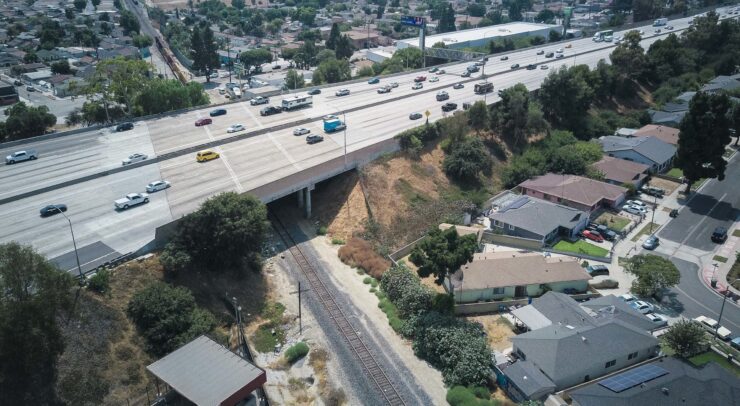A crash course on urban planning
The birth of Ontario suburbs began post World War Two; as many soldiers returned, the demand for housing increased exponentially. At the turn of the century, about two-thirds of Canadians lived in rural areas. However, by 1971, two out of every three people lived in towns or cities. Toronto at the time was the fastest growing city in the country, and as a result, the first Canadian suburb, named Don Mills, was built 11 kilometres from the city.
The problem with the modern car-dependent suburban city is that it evokes images of identical houses, lined with vast driveways and multiple cars, gigantic shopping centers with impossibly long parking lots, boring building designs, and seemingly never ending traffic. These soul-crushing suburbs appear to be duplicating by the day and it needs to stop.
How to identify urban sprawl?
Sprawl can be described as development spiraling outward from urban centers; however, there are several other characteristics to best identify them. More recently, they have been found responsible for habitat fragmentation, water and air pollution, increased infrastructure costs, inequality, and social homogeneity.
The most common feature are the low-density family residences. These dwellings are often situated on previously fertile and productive land. Their quintessential winding roads and cohesive building materials create a sense of community and belonging.
What are the causes of urban sprawl?
Although the causes of urban sprawl are vast, economists have identified three of the most common causes. The first of them being population growth, followed by increased incomes allowing individuals to purchase larger homes and finally, widespread access to cars aided by the improvement of the automotive industry.
The segregation of land uses and increased distance from urban cities not only encouraged but forced daily automotive use over other forms of transportation. Since residential neighbourhoods were completely separated from commercial buildings, even short trips to the store require a car. The once-charming suburban roads now act as an obstacle for walking and biking to nearby destinations.
What is traditional development?
For centuries, cities were designed so that individuals had access to everything they needed within walking distance. As a result streets and public spaces were designed to be inviting, lively, and enjoyable to walk in.
These cities still remain in Europe and are where most North Americans go on vacation, only to return home to their depressingly, soul-crushingly, car-dependent suburbs.
Traditional developments have mixed uses rather than segregated uses. Typically commercial stores and restaurants line the ground level, and apartments or offices are found directly above. Most importantly, these properties are flexible: a shop could turn into a house, a house might turn into a bakery, allowing the infrastructure to evolve with the growing city. Contrast that to suburban cities, where strict building zoning laws prohibit mixed land uses.
The difference between a street and a road?
A road is a high-speed connection between two locations. The high speed requires wide roads to avoid vehicle collisions, the road should be as straight as possible, signs are typically oversized to be read easily at high speeds, and entrances and exits are few and far between.
A street is a complex environment where life in the city can occur, buildings are placed close to the sidewalk to be easily accessible by people walking, these spaces have many entrances and exits to and from the street, there is often street parking (not unappealing parking lots). This environment encourages slow speeds because this is often the destination containing shops, restaurants, bars, etc. Everything on the street is at a human scale; this makes the street inviting and lively. Large, oversized store names will not be seen here, unlike in suburban strip developments. The street is able to get the most value out of the space available. High speed traffic is not safe for these areas because of the number of walking and cycling individuals; therefore, speeds must be reduced.
A common feature of most suburban commercial shopping centres are that they combine characteristics of both a street and a road, but in doing so, they fail at successfully being either one and are thus identified as stroads.
The stroads lining commercial strips are vast and contain wide highway sized lanes encouraging high speeds. There are many driveways, entrances and exits to businesses and homes This creates a very dangerous mix of high speeds with many points of contact. The large parking spaces to accommodate cars create long distances between stores. The signs are large and are meant to be read while driving which does not feel inviting for anyone who isn’t in a car.
Yes, I’m looking at you, Walmart, and your ‘smart centers’.
These stroads are inefficient at moving traffic, even though they encourage high speeds. This is because there are constantly cars merging out of lanes, entering or exiting store entrances, and there are numerous cross walks requiring traffic to stop. It’s fair to say that nobody is moving efficiently on a stroad.
Car traffic volumes are extremely high on stroads too since there are no viable alternatives to driving. Buses are constantly stuck in traffic, distances are too far to walk, and the roads do not accommodate bikes safely.
What’s the solution?
The solution is rather simple and has been in effect in many European cities. Providing individuals with multiple viable and efficient forms of transportation will lead to fewer individuals requiring a car. Removing more cars on the roads will reduce traffic, allowing public transportation to remain on time and efficient.
In the Netherlands, there are multiple viable options for individuals who need to get between locations. On any given day a resident could drive, bus, walk, bike, take a train, take a street car, or take a water taxi. This is made possible because the city has invested time into considering the needs of each street, road, and motorway. High speed motorways are for cars only, there are no traffic lights, and the roads are wide and straight to encourage high speed traffic to keep the flow moving. There’s a complex set of connections roads that lead to streets that contain businesses, residential buildings, parks, etc. The streets are designed in such a way that demands drivers to pay attention. The roads are narrow and winding, there are multiple speed bumps, and sidewalks do not end and dip at intersections with streets. Rather, crosswalks are raised and force cars to slow down as they enter.
All of these practices and many more combined allow for choice and make everyday life less about the commute and more about the destination.





